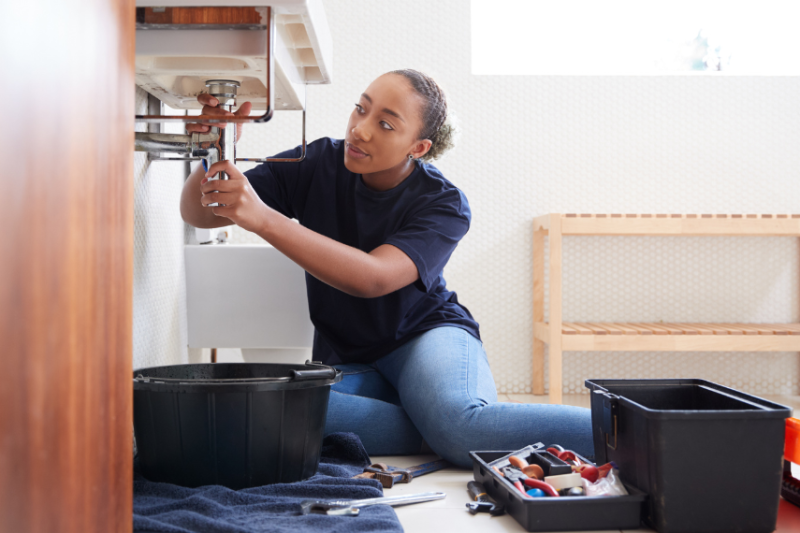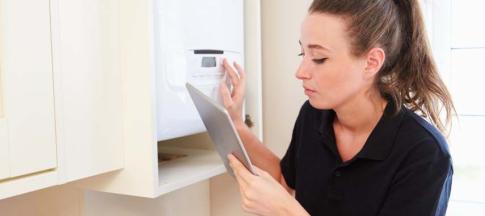
Trace and access is a common feature on home insurance policies like buildings insurance. It covers the cost of finding the source of a leak and exposing it so it can be repaired.
Read on to learn more about what trace and access covers and what to do if you have a leak.
Remember, policy limits and exclusions apply to our different insurance products. Always make sure you check your policy book to see what you are and aren’t covered for.
What does trace and access cover?
Trace and access covers the cost of removing and replacing parts of the building when trying to locate the source of a leak.
This is sometimes more work than expected, and if the leak's source isn’t obvious, it can be disruptive. You might need to take up floorboards, for example, to access the plumbing in question.
Trace and access covers the cost of putting your home back to the way it was beforehand.
What doesn’t trace and access cover?
Trace and access cover doesn’t include repairing the source of the leak such as tanks or pipes, or the cost of any damage the leak has caused.
It doesn't sort out issues like a faulty boiler or heating either, which Home Emergency cover handles.
Note that Home Emergency cover isn't always included as standard and is an optional add-on.
Does home insurance cover trace and access as standard?
It depends on your policy.
Levels of cover vary, so don’t assume that trace and access cover is standard. Check your home insurance policy or speak to your insurer to find out what’s protected and what isn’t if you’re not sure.
All of Admiral’s home insurance tiers (Admiral, Gold and Platinum) offer a level of trace and access cover, as shown below:
- Admiral: up to £5,000
- Gold: up to £5,000
- Platinum: up to £10,000
You won’t be covered if you only have contents home insurance.
Is trace and access included in Home Emergency cover?
No, trace and access is not included in Home Emergency or Home Emergency Extra cover.
People often misunderstand the differences between trace and access and Home Emergency cover which can lead to rejected claims and serious damage.
Here’s an example to explain the difference:
If your toilet starts leaking and won’t stop, you should call the Home Emergency cover helpline who will arrange for a tradesman to temporarily stop the leak.
That tradesman won’t find out where the leak is coming from and won’t repair any damage caused by the leak.
Trace and access covers the cost of finding the source of the leak and replacing any parts of the building (if the source of the leak isn’t obvious and accessible). This might be covered by your home insurance policy.
Again, it’s important to note that Home Emergency cover isn't always included as standard in your policy and is an optional add-on. Check your policy book to see if you’re covered.
Is trace and access included on landlord insurance?
It depends on your policy and your level of cover.
For instance, on our landlord insurance we have the following cover limits for trace and access:
- Admiral: not included
- Admiral Gold: up to £5,000
- Admiral Platinum: up to £10,000
Check your policy book for more details. We also offer Landlord Emergency cover.
You won’t be covered if you only have contents landlord insurance.
Are underground pipes covered by home insurance?
Your home insurance Buildings policy will likely cover accidental damage to underground drains, pipes, cables and tanks that you’re responsible for.
Once again, always check your policy book to check what’s covered. It’s likely your insurer won’t cover pipes that have been damaged intentionally or have degraded over time due to general wear and tear.
They’re also unlikely to be covered if the damaged pipes aren’t your responsibility – for example, they’re the responsibility of the local water authority.
If there’s no damage to the pipe or drain itself, the cost of clearing blockages from pipes and drains is not covered by your home insurance.
Our Platinum Buildings Home Insurance policy covers accidental damage to underground drains, pipes, cables and tanks. You can add it to Admiral and Admiral Gold as an upgrade.
How do I make a trace and access claim?
To make a trace and access claim, first check your home insurance policy documents to make sure you’re covered. If you are, head to our make a claim page.
Call our helpline if you’ve discovered a leak and have Home Emergency cover or Home Emergency Extra cover.
If it’s not an emergency or you don’t have this cover, check your insurance policy to see if your provider would prefer you to call them first.
They might then send an approved plumber or engineer around to find and isolate the problem.
If your provider sends out a specialist trace and access company or tradesperson, they’re likely to cover the cost from the off. Otherwise, you might need to pay a professional upfront and claim the cost back from your insurer.
Your insurer is unlikely to cover the cost of any work deemed excessive or unnecessary. For example, unnecessarily ripped-out drywall isn't covered.
This is why it’s usually better to let your insurance provider send approved workers. You’ll know that any work undertaken will be covered, and you won’t have to pay upfront.


